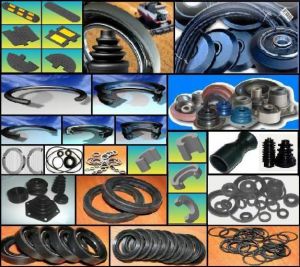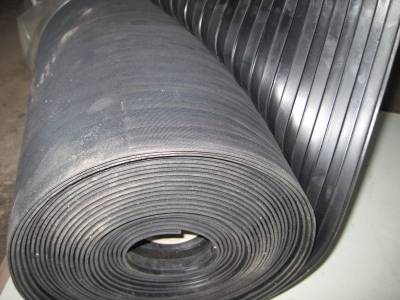

The method involves soaking samples of oil-resistant machinery rubbers in cutting fluids at a given temperature and for a given period, as well as determining their resistance to the cutting fluid by the changes in the weight and dimensions of the samples.
1. Equipment and materials:
2. Test preparation.
Use samples of oil-resistant rubber of 2 +/- 0.2 mm thick, 50 mm long vulcanized plates.
Samples of the products used in the machine tool industry (seals, rings, sleeves, etc.) may be used.
3. Test procedure.
3.1 Wipe rubber samples with a cloth dampened with benzene; dry and weigh it on an analytical balance accurate to 0.0001 g at a temperature of 23 +/-2°C and 70% relative humidity.
3.2 Put prepared samples in glasses with the test cutting fluid. Cover glasses with caps tightly. Level of the medium over the samples shall be at least 2 cm, and the glass shall not be filled to more than 75%. Put the samples in a heating block preheated to 60 +/-2°C.
3.3 Conduct the tests until the samples are in equilibrium swelling state in the test media, which is characterized by the establishment of a constant weight. The weight is considered constant if the sample weight at the subsequent weighing differs from the sample weight in the previous weighing by not more than 0.0001 g; weighing frequency shall not exceed 2 days.
3.4 Before weighing, remove the rubber samples from the medium, rinse them with benzine and put them into the air of the desiccator for 60 minutes at a temperature of 23 +/-2°C.
3.5 Measure the length of the sample (l) with an accuracy of +/-0.5 mm and determine the width in four points evenly spaced on the surface of the sample. Measure the width of the sample with a thickness gauge with an accuracy of +/-0.01mm in four points evenly spaced on the surface of the sample.
Changing the size of the sample shall be recorded only if plates as per GOST 9.090-74 are available.
3.6 When tested in oil cutting fluids, before weighing, rubber samples shall be carefully washed in benzine until there are no traces of oil on the cleaning cloth.
4. Test results.
4.1 The test result is the arithmetic mean value of the index calculated from the test results of at least two samples.
4.2 Calculate the weight change (dM) by the formula:
dM=(Q1-Q0)/Q0*100%
where
Q0 is the initial weight, g;
Q1 is the final weight, g.
4.3 Calculate the sample dimension change (dP) by the formula:
dP=(P2-P1)/P1*100%
where
P1 is initial rubber dimensions (length x width x thickness), cm3;
P2 is rubber sample dimensions after achieving constant weight, cm3.
4.4 In accordance with GOST 9030-74, standards for changes of weight and dimensions of standard rubber shall be in accordance with the specifications for the respective type of rubber.
Detergent-disinfectants for metal working
Rational use of water-miscible cutting fluids at the metalworking enterprises may be achieved by regular washing and disinfecting of the mixing, supply and circulation systems for working emulsions and solutions.
Industrial equipment surfaces are contaminated by oil buildup combined with metal dust and microorganisms, as well as films of various origins accumulated in the course of the cutting fluid use, which leads to deterioration in the performance (lubrication, etc.), functionality, emulsion stability, as well as reduction of emulsion life; a decrease in the quality of the working surface, burn marks on the workpieces; damage to the machine components (friction units, etc..), destruction of coatings, rubber seals, insulation; premature wear or failure of the tools, machines, electronic devices and other equipment; an increase in labour costs for machine servicing, as well as the deterioration of sanitary and hygiene working conditions of operators.
Special detergent-disinfectants for metalworking allow combining stages of washing and disinfection, reducing the amount of manual labour and duration of cleaning. However, given the recent shift from centralized cutting fluid supply systems to separate machine operation, mechanical cleaning of the machines followed by washing and disinfection remains the most effective way of cleaning equipment at the moment. Although this approach is more time consuming compared to the use of detergent-disinfectants, it is 100% effective.